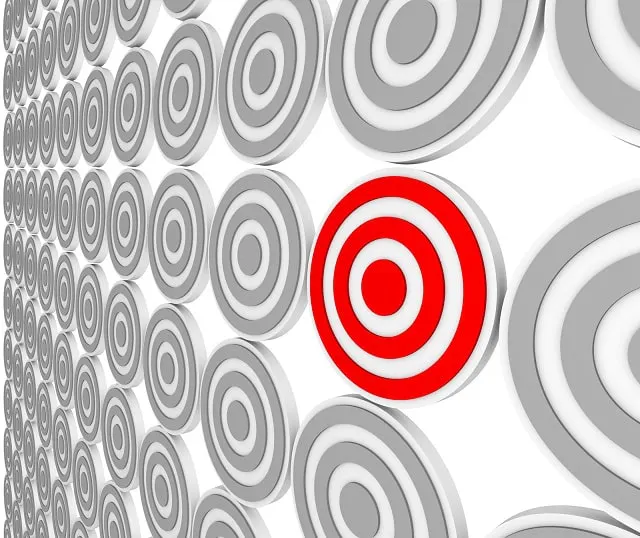Research almost any marketing technique, and you’ll learn one thing quickly: they rely on identifying your target market first. That’s because your target market is the most likely audience to buy your product or service. It only makes sense that you’ll want to spend money marketing to those people rather than others with no interest.
When you identify and reach your target market, you’ll have a better return on your investment and spend less money on customer acquisition. Follow along with this guide for key tips to identify and reach your ideal audience.
Identifying Your Target Market
The first step is defining who your target market is. What is their age range? Where do they live? What are their typical likes and dislikes? What do they do for work? These are all questions you should be able to answer about your audience before marketing to them.
Analyze Your Current Customers
First, start with your current customer base if you’re already selling something. Your current customers can tell you a lot about the kind of people who are interested in your product or service because they’re already spending money on it.
Use tools, like website analytics or Google Analytics for Google Ads, to determine similar characteristics your audience shares. Then, use those similarities to decide who else to target. For instance, you might notice that a large portion of your buyers earn over $100,000 a year, so targeting more people in that salary range could be beneficial.
Conduct Market and Competitor Research
Next, take a look at your competitors and their audiences. Dig into their social media accounts to see who follows them and interacts with their posts, and read their blog posts to discover who they target with their content.
You can also conduct your own market research through social media polls or surveys. Or, send out an email to your subscribers asking them to reply with answers to a few questions to get a better idea of their interests and needs.
Create a Customer Persona
Once you’ve gathered information about your ideal customer, turn that customer into a “persona.” This fictional persona is your go-to customer who quickly buys your product or service. This is the person you’re marketing to. Add as much information as you can to your customer persona, including their:
- Age
- Location
- Gender
- Occupation
- Ethnic background
- Marital status
- Family profile (kids, pets, etc.)
- Salary
- Education level
- Hobbies and interests
- Dislikes
- Shopping preferences
- Personal or professional needs
How to Reach Your Target Market
After defining your audience to a T, it’s time to start reaching your ideal customers.
Target Your Advertising
Targeted advertising pinpoints a specific group of people to show your ads to. As a result, you’re getting more customers who are likely to buy your stuff, and you’re spending less money to get there. Google and social media platforms offer several ways to target your audience based on their demographics and online behaviors.
Facebook even offers a lookalike audience targeting option that lets you target a group of people similar to a competitor’s audience. This way, you’re showing your ads to people who will probably have an interest in your business, too.
Tailor Your Content Marketing
Content marketing — blogs, videos, emails, etc. — is an excellent way to draw in the people who you can help. The idea behind content marketing is to provide a lot of value on one subject. The people who will find your information valuable can discover your brand’s content through Google searches, YouTube, social media, and other channels where you post content.
Use your customer persona when shaping your content. Each piece of content should speak directly to your target customer.
Find Influencers Your Audience Follows
There are influencers in just about every industry these days, and influencer marketing can be highly effective. For instance, your ideal customer probably follows fitness influencers if you own an activewear company. Partnering with a few fitness influencers to promote your brand is a straightforward way to make those followers your followers, too.
Think a bit outside the box to attract more people. For instance, your activewear company might also share an audience with outdoor adventurists, travel bloggers, or busy parents looking for comfortable leisure clothes.
Keep Loyal Customers Coming Back
Don’t forget about your current customers on your quest to find new ones. These people have stuck it out with you and already love your brand. Taking care of them can even nurture new relationships because happy customers are the ones who talk about brands they love to people they know.
You can also try a referral program to get more people just like your current customers to your business. Give customers coupon codes to share with other like-minded friends and family members, and offer them something for their referral, like a percent discount or reward points.
Building a solid customer takes time. It also is a continuous process that requires a commitment to foster relationships with your customers and keep creating products or services that meet their needs.
One simple way to start reaching more members of your target audience is installing social media share buttons on your blog or website. Social media users tend to be connected with many like-minded users, so when they share your carefully crafted content, you’re reaching more target customers. Plus, when your content is shared by someone they know rather than a brand they don’t yet know, it’s similar to a word-of-mouth recommendation – still one of the most effective forms of advertising in existence.






